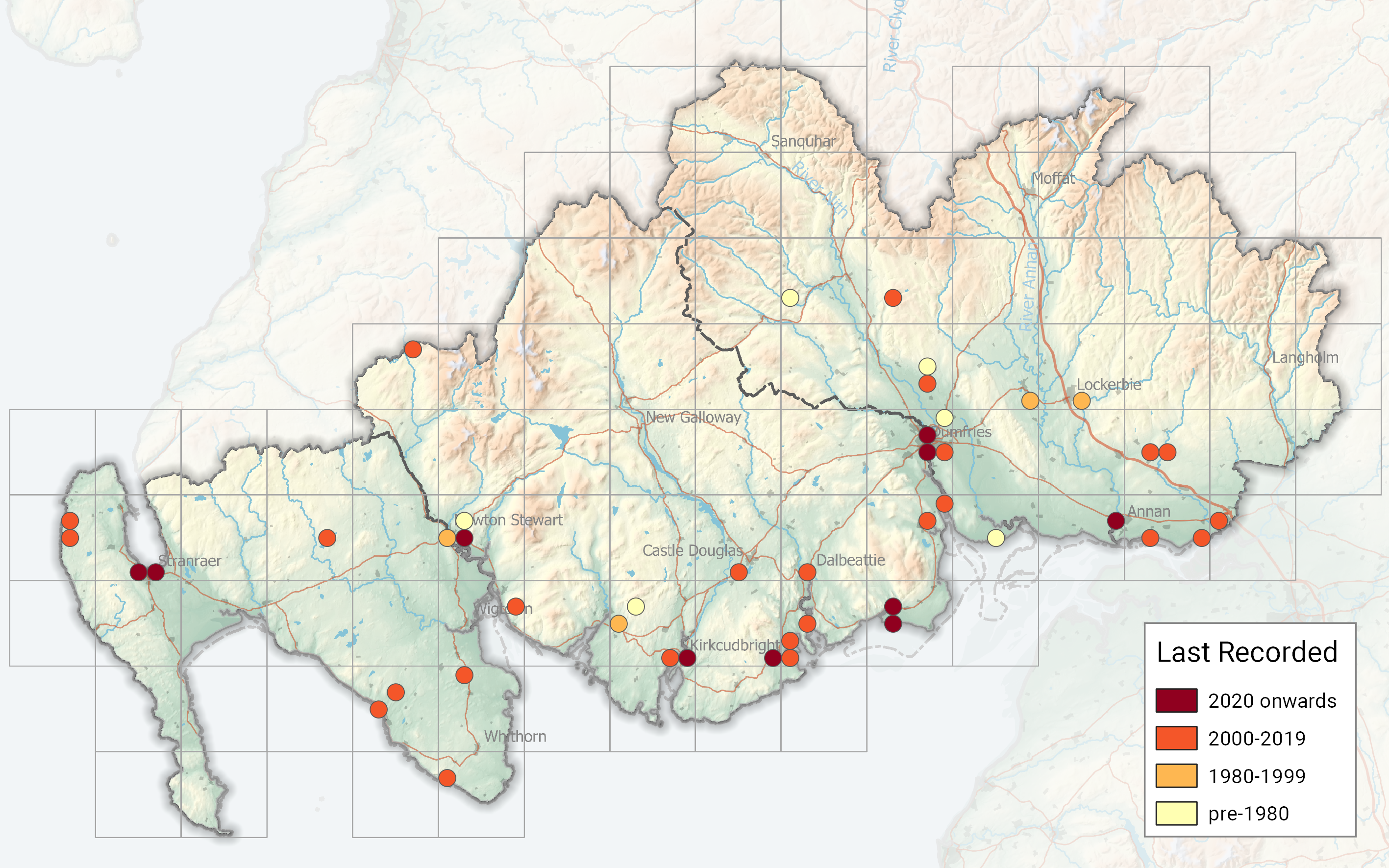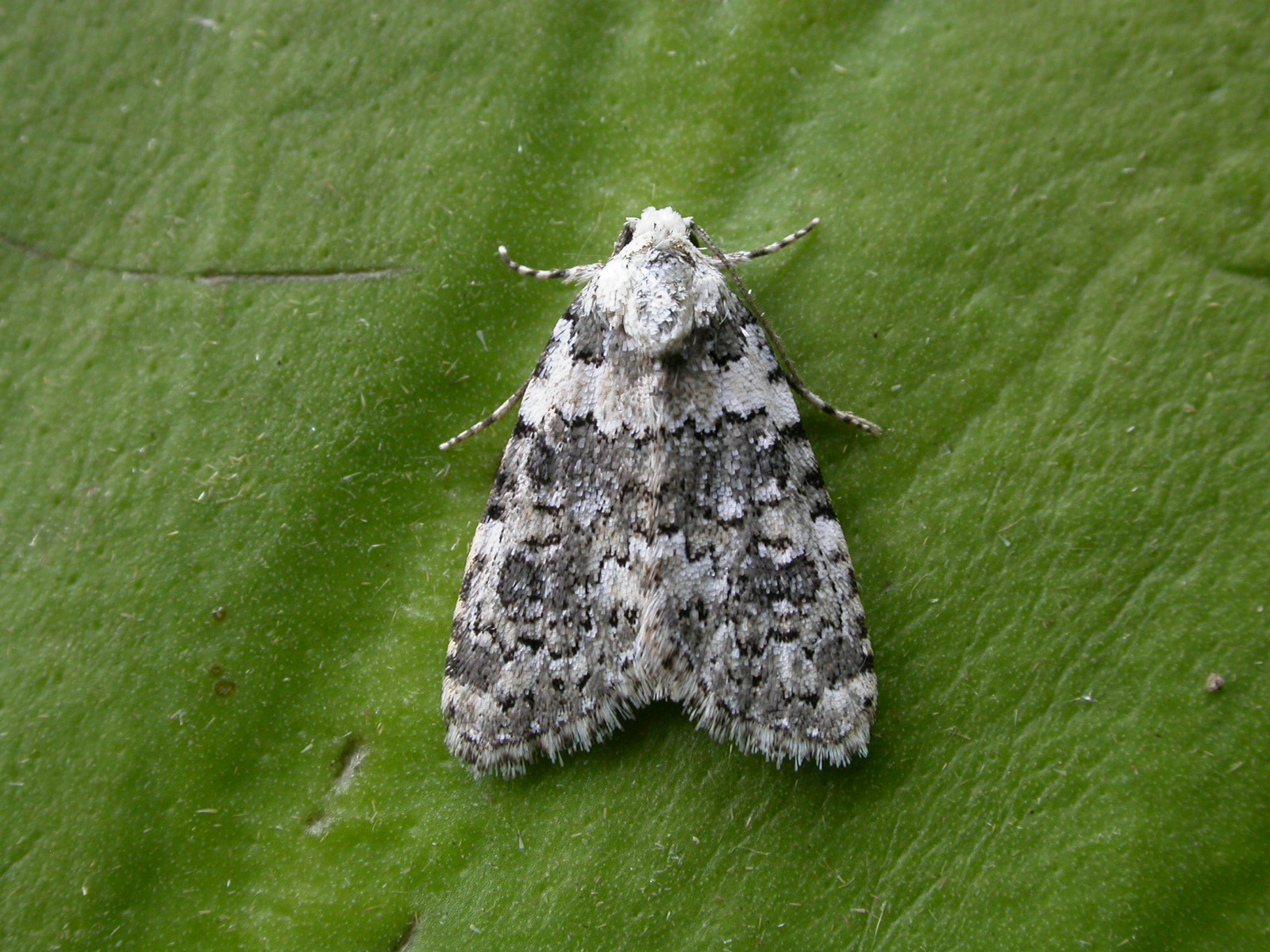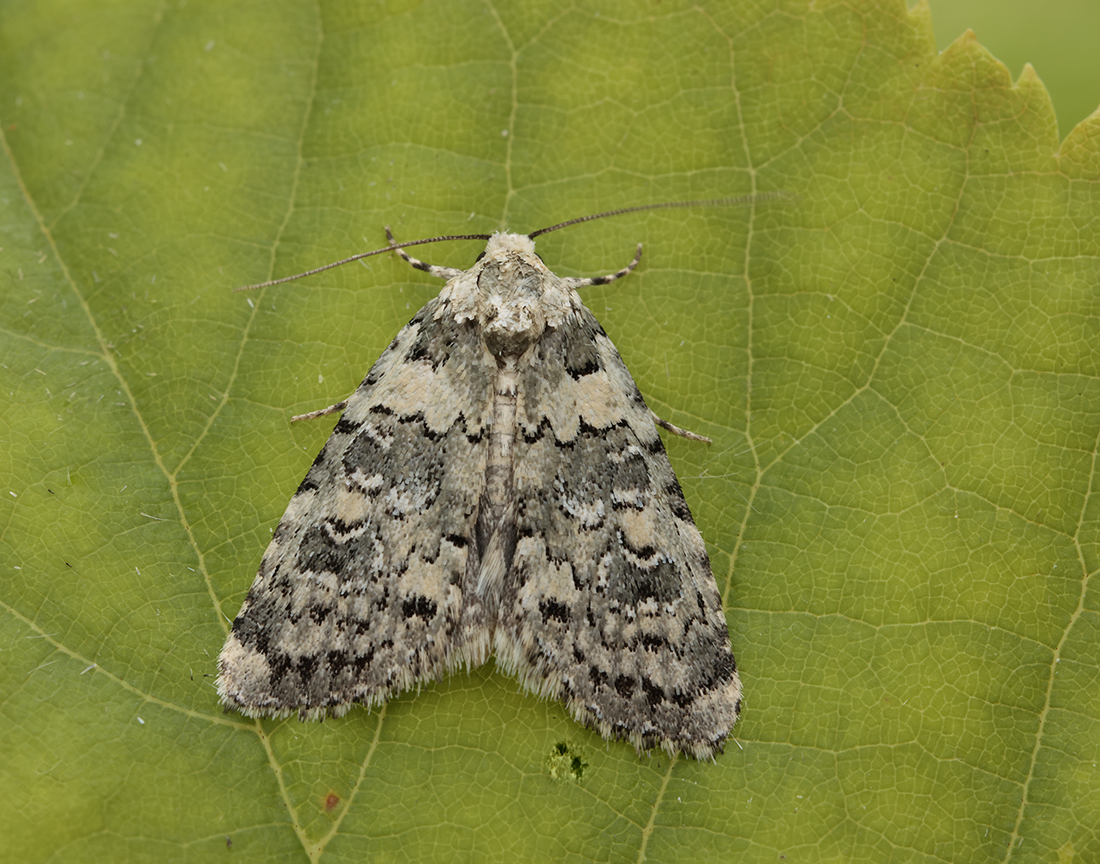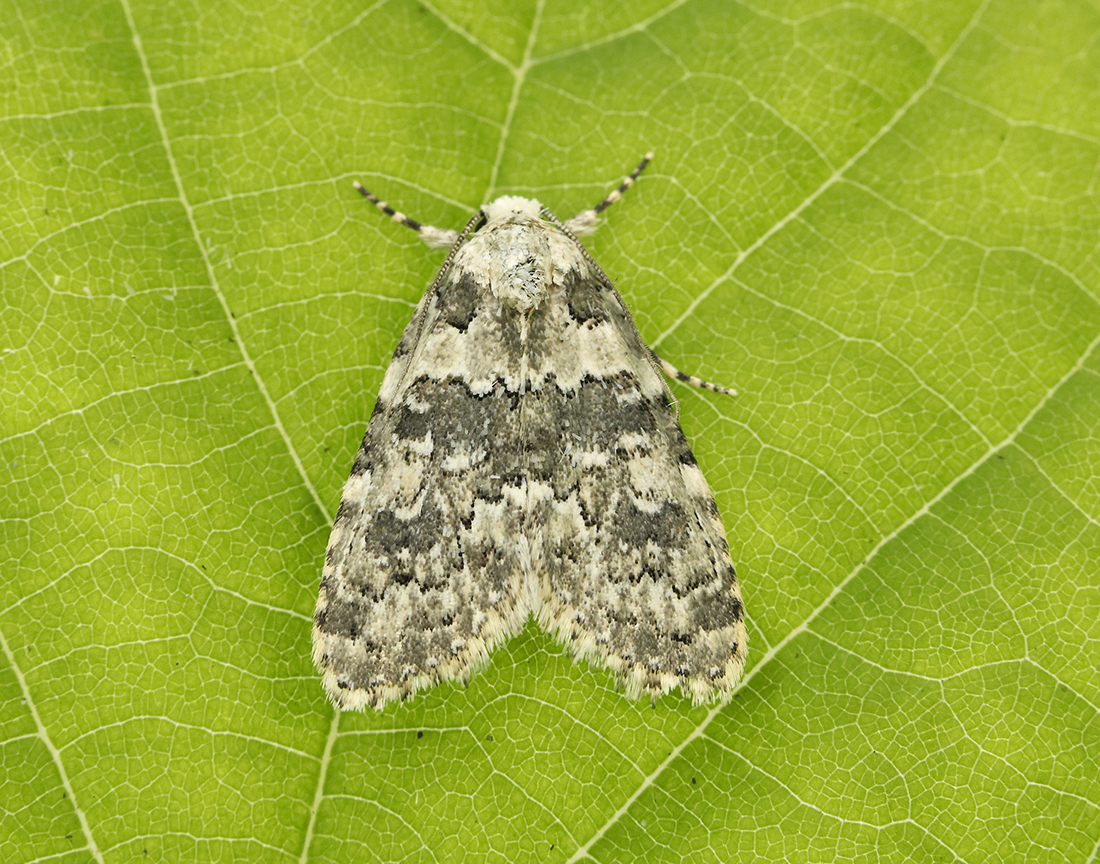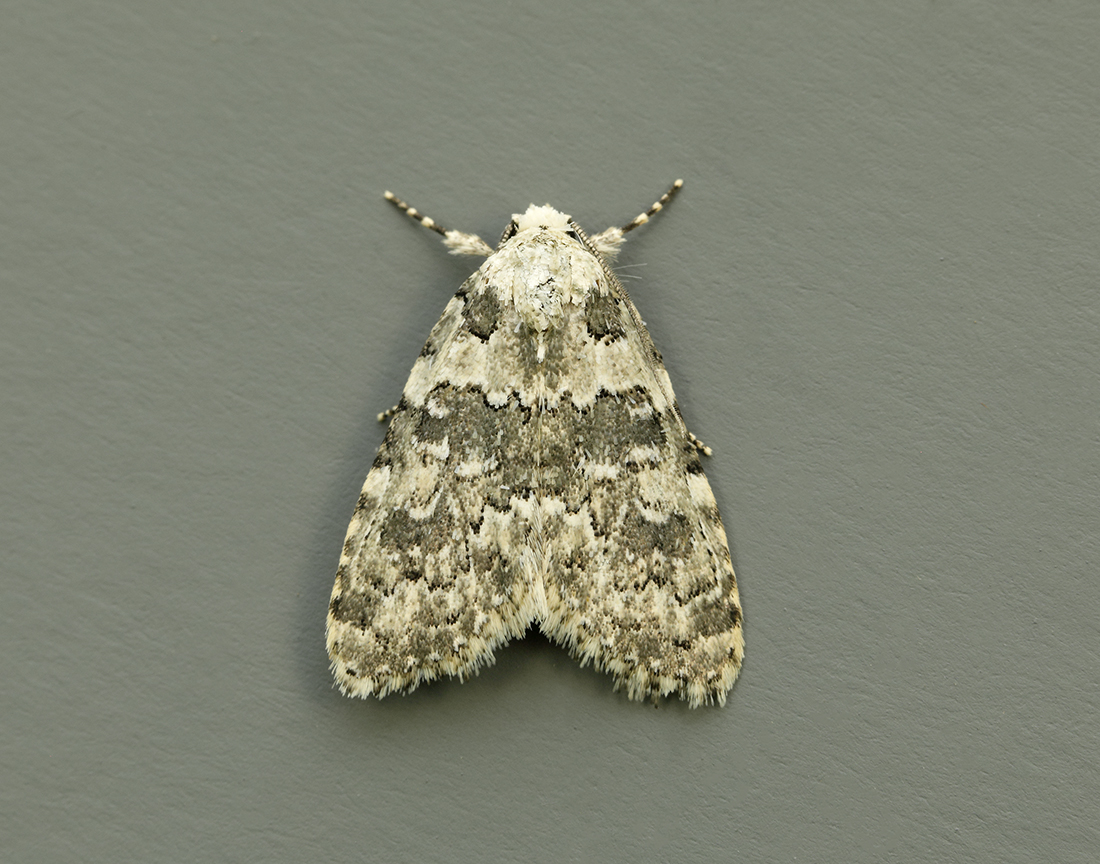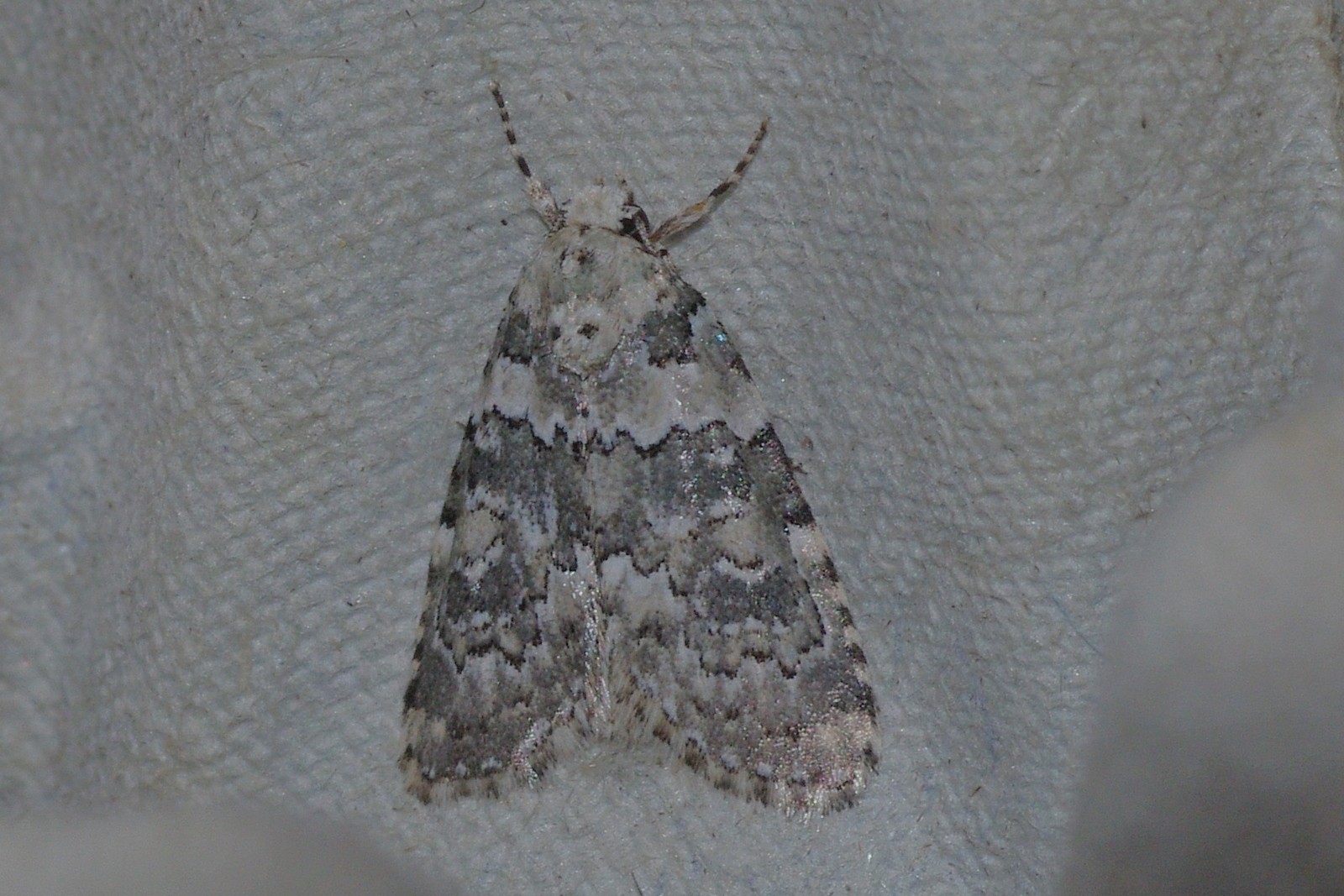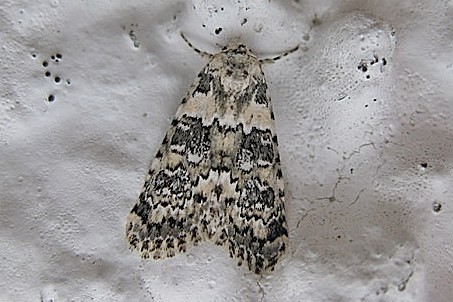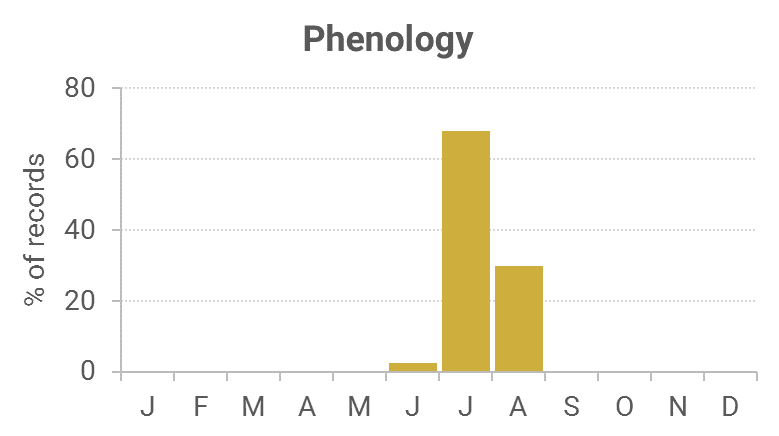Identification
The grey cross-band edged with a dark line basally which runs completely from the costa to the dorsum will aid identification.
Recording Method.
Attracted to light, also comes to sugar and flowers.
Life cycle
One generation. Overwinters as a small larva during September to May, feeding at night and hiding by day in a silken retreat, from where it pupates.
Larval foodplants
Lichens growing on trees, rocks and walls.
Habitat
Found in wide range of habitats, wherever its lichen foodplants grow on rocks and walls.
History
Lennon (1863) was the first to record it after finding it at the Crichton Institution where he worked. Gordon (1913) recorded one taken on the window of the Galloway Arms Hotel in Newton Stewart on 2nd August 1905. Archibald Russell (1944) listed it as occurring near Gatehouse of Fleet (VC73) during the years 1942-43. Sir Arthur Duncan (1909-84) during his lifetime had found it at Tynron and Castlehill, Dumfries (all VC72). Cunningham (1947) in the Transactions had two records both at light in Dumfries, one in late September 1946, the other late July 1947.
During 1974-80 there were four records from the Gatehouse of Fleet Rothamsted station, a single from Caerlaverock and nine from the Newton Stewart station. A poor return. In 1978 and 1980 it was located in the Lockerbie area.
The next records were in 1994 from the regular trapped site at Kirkton until 2010, amounting to twenty records. Of the nearly thirty records left, these were trapped at widely scattered sites across the region.

